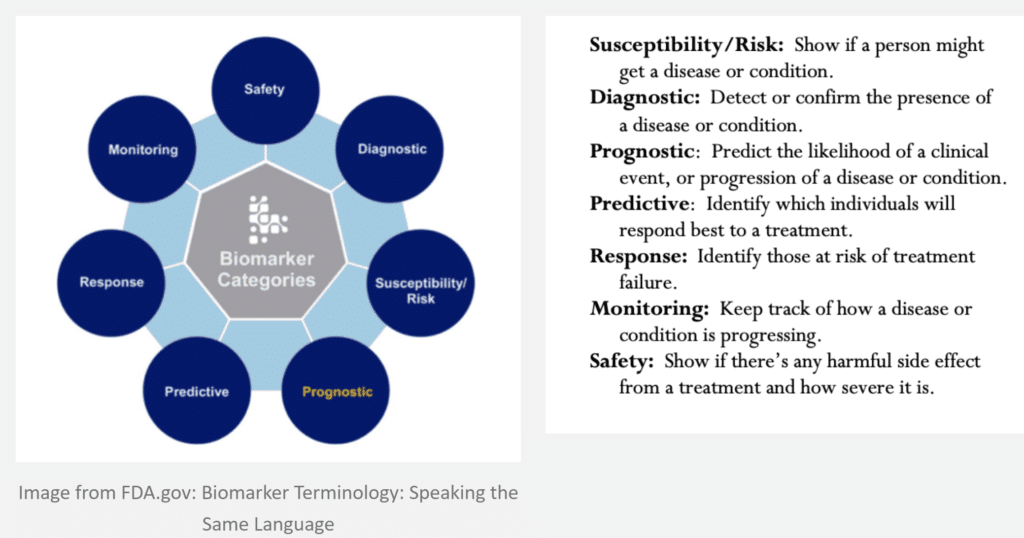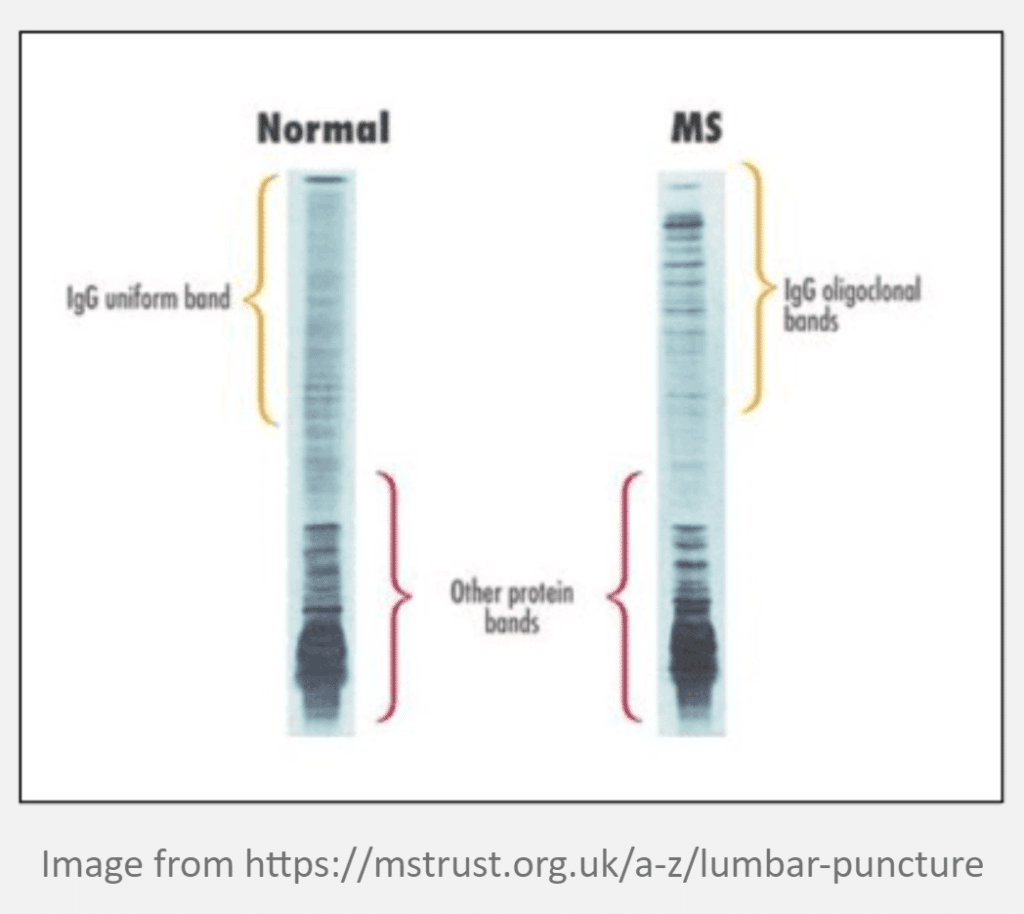March 2024
Exploring MS biomarkers holds great potential for transforming the landscape of MS management, enabling better diagnostics, earlier interventions, and improved symptom control. This research may also reveal more about disease progression, potentially paving the way to targeted therapies and personalized treatments.
What is a biomarker?
The term “biomarker” stands for “biological marker.” Many car owners know the frustration of a “check engine” light flashing on the dashboard. It’s a signal that something’s wrong, but a mechanic’s tests are needed to determine the specific issue. In medicine, a symptom acts like this warning light, alerting you to a health issue, but not explaining it fully. Biomarkers are like the mechanic’s test results; they give doctors detailed information about what’s happening inside the body.

According to the Food and Drug Administration (FDA), biomarkers are “characteristics that are objectively measured as indicators of health, disease, or a response to an exposure or intervention, including therapeutic interventions.”
Some biomarkers are relatively easy to observe, for example blood pressure. Others require more complex testing to detect. Molecular biomarkers have physical and chemical properties that make it possible to measure them in biological samples like blood, or cerebrospinal fluid (CSF, the fluid surrounding the brain and spinal cord). Radiographic biomarkers are obtained from imaging studies. A genetic biomarker (or genetic marker) is a DNA sequence that causes disease or is associated with susceptibility to disease. This month, in the first article of a three-part series, we focus on the molecular biomarkers that are associated with MS.
Per the FDA, there are seven categories of biomarkers, each defined by how they are used:

Molecular biomarkers currently used in MS care
Immunoglobulin G (IgG) / Oligoclonal Bands
IgG and oligoclonal bands are diagnostic and prognostic biomarkers for MS. IgG is an antibody usually found in the blood that plays a key role in protecting against bacterial and viral infections. In the context of MS, igG is produced in the CSF. This production indicates that the immune system is active within the central nervous system, a process not typical in healthy individuals. The presence of specific IgG patterns, known as oligoclonal bands, in the CSF is a key indicator of MS. Understanding the production and patterns of IgG in the CSF is essential for learning more about MS and how to treat it.

Continue reading From Accelerated Cure Project (ACP) by clicking here
““““““““““““““““““““““““““““““““““



